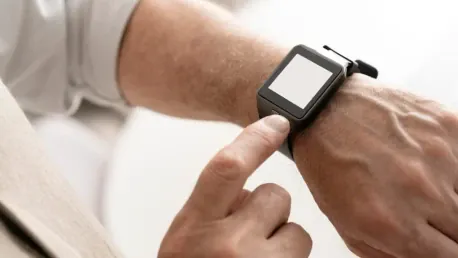Parkinson’s disease is a debilitating and progressive neurological disorder that affects millions globally. Traditional treatments have focused primarily on medication and physical therapy, often requiring frequent doctor visits. However, wearable technology is now transforming the management of Parkinson’s disease, offering real-time monitoring and personalized treatment plans that significantly enhance patients’ quality of life.
The Role of Wearable Technology in Healthcare
Continuous Monitoring and Data Collection
Wearable devices equipped with advanced sensors and connectivity features are now at the forefront of healthcare for chronic conditions. These devices can continuously monitor a patient’s physical movements and vital signs, providing invaluable data for both patients and healthcare providers. For example, accelerometers and gyroscopes integrated into wearables can track motion and detect subtle changes in movement patterns, which are often symptomatic of the worsening of Parkinson’s disease. By capturing this continuous stream of data, wearables offer a dynamic and comprehensive view of a patient’s medical condition.
In addition to movement tracking, wearable devices can monitor other critical health parameters such as heart rate, blood pressure, and sleep quality. These comprehensive data streams can inform healthcare providers about a patient’s overall health status and any emerging medical complications. This data is especially beneficial because it allows for the monitoring of symptoms outside of the clinical setting, offering a more accurate reflection of a patient’s daily life. Real-time data collection helps make the healthcare system more efficient by enabling early detection of issues, thereby preventing severe complications and reducing emergency hospital visits.
Enhanced Autonomy and Control
For patients managing chronic conditions like Parkinson’s, wearable technology offers increased autonomy and control over their condition, enabling them to manage their day-to-day health more effectively. Having access to real-time data about their condition allows patients to observe symptom patterns and make lifestyle adjustments accordingly. For instance, they can alter their exercise routines, adjust their sleep schedules, or fine-tune their medication intake to better cope with fluctuating symptoms. Such active participation in their own care fosters a sense of empowerment and enhances their overall quality of life.
Moreover, the real-time feedback from wearable devices allows patients to respond more promptly to any irregularities. Instead of waiting for scheduled check-ups, patients can see how their body reacts to specific treatments or activities and take immediate action if necessary. This increased level of control can reduce anxiety related to the unpredictability of Parkinson’s symptoms. Wearable technology also provides a level of safety, with features like fall detection systems that can alert caregivers or medical professionals in emergencies, thus ensuring timely assistance.
Personalized Parkinson’s Treatment
Real-Time Data Collection
Wearable technology enables a more precise and personalized approach to Parkinson’s treatment. These devices collect real-time data on various aspects of a patient’s health, from tremors to heart rate, ensuring that healthcare providers can track subtle changes and trends that may otherwise go unnoticed. This constant stream of information allows for the identification of patterns within the symptoms, which can be crucial for tailoring effective treatments. For example, if a wearable detects an increase in tremor frequency at specific times of the day, doctors can modify medication schedules to better target those periods.
Another significant benefit of real-time data collection is the ability to fine-tune therapeutic interventions. Wearable devices not only track physical symptoms but can also monitor the efficacy of different medications or physiotherapy regimens in real time. This ongoing assessment provides a robust foundation for evidence-based treatment, moving away from the traditional trial-and-error approach to a more data-driven strategy. With wearable tech, healthcare providers can continuously optimize medications and therapies, ensuring the most effective treatment plan for each individual.
Adaptive Treatment Plans
Analyzing this comprehensive data allows healthcare providers to make informed decisions about medication dosages, the timing of doses, and other therapeutic interventions. This customization ensures that treatments are tailored to the individual needs of each patient, leading to more effective management of their condition. For example, data analytics can indicate the optimal times to administer certain medications, thus aligning treatment with the patient’s biological rhythms for maximum efficacy. Personalized treatment plans contribute significantly to minimizing side effects and improving overall treatment outcomes.
Adaptive treatment plans facilitated by wearable technology can also include non-pharmacological interventions. For instance, if the data indicates that certain exercises or physical activities reduce symptom severity, these can be incorporated into the patient’s daily routine. Moreover, data-driven insights can influence diet, stress management techniques, and other lifestyle modifications that collectively enhance overall well-being. The integration of this holistic approach, supported by continuous data flow, ensures that all facets of the patient’s health are considered, thereby promoting a more balanced and effective treatment program.
Empowerment Through Data Tracking and Analysis
Understanding Symptom Fluctuations
One of the significant advantages of wearable technology is the empowerment it provides patients through data tracking and analysis. By monitoring movement patterns, tremor frequency, and other vital signs, patients can better understand their symptoms and make informed decisions about daily activities and medication schedules. This data-driven awareness allows patients to anticipate symptom exacerbations and take preemptive actions, thus maintaining a higher level of day-to-day functioning. Understanding these fluctuations can help patients schedule important activities during their “on” periods when symptoms are less severe.
Additionally, having a detailed log of their own medical data enables patients to take a more proactive stance in their healthcare. They can discuss specific concerns with their healthcare providers more accurately, using data to back up their experiences. For example, patients can present logs showing correlations between medication timing and symptom relief, leading to more productive consultations and optimized treatment adjustments. Such proactive management can significantly enhance the quality of one’s health and daily life, making patients feel more in control of their disease.
Enhancing Patient-Provider Collaboration
The data from wearable devices can be seamlessly shared with healthcare providers, fostering a more collaborative approach to care. This partnership ensures treatment plans are dynamic and responsive to the patient’s evolving needs, helping patients feel more in control and engaged in their treatment journey. The ability to share real-time health metrics enables a continuous dialogue between patients and doctors, ensuring immediate adjustments to treatment protocols and quicker responses to emerging symptoms. Collaborative care allows for timely interventions that can mitigate potentially severe health issues before they escalate.
Furthermore, this real-time data sharing breaks down geographical barriers, enabling patients to receive expert care regardless of their location. Doctors can monitor patients remotely, provide timely feedback, and make necessary adjustments to treatment plans without requiring patients to travel. This remote monitoring capability is particularly beneficial for those living in rural or underserved areas, where access to specialized Parkinson’s care might be limited. By leveraging wearable technology, healthcare providers can offer a higher standard of care, personalized and adaptive, irrespective of the patient’s geographical constraints.
Convenience and Benefits of Telemedicine
Overcoming Mobility Challenges
Remote monitoring and telemedicine offer significant benefits for individuals with Parkinson’s, who may find regular travel to medical appointments challenging. These options reduce the need for in-person visits by allowing patients to collect and transmit health data from the comfort of their homes. Mobility issues, fatigue, or the need for constant care often make frequent travels to clinics a strenuous ordeal for Parkinson’s patients. Through remote monitoring, they can continuously track their health parameters and share the data with their healthcare providers, making it easier to manage their condition without leaving home.
The convenience of telemedicine extends beyond reducing physical and logistical burdens. It also improves the consistency of care, as patients can have virtual consultations with their doctors at any time, ensuring that any concerns or changes in symptoms are addressed promptly. Virtual visits facilitate better engagement between patients and healthcare providers, as the ease of scheduling and accessibility increases the frequency of interaction. This constant and consistent communication ensures that patients receive timely interventions and support, significantly enhancing treatment adherence and outcomes.
Continuous, High-Quality Care
Telemedicine platforms enable virtual consultations that allow healthcare providers to review real-time data, make timely adjustments to treatment plans, and address patient concerns promptly. This continuous care ensures that patients receive high-quality treatment without the physical and logistical burdens of frequent clinic visits. The ability to have real-time data at their fingertips allows doctors to provide more accurate and effective treatment recommendations. This is particularly crucial for conditions like Parkinson’s, where symptoms can fluctuate significantly and require urgent attention.
Moreover, the synergy of wearable technology and telemedicine creates an integrated health management ecosystem. Wearable devices feed data into telemedicine platforms, giving healthcare providers a comprehensive overview of a patient’s health. This data-driven approach ensures that consultations are informed by the latest, most accurate health metrics, leading to better-informed decision-making and personalized treatment plans. Patients stand to benefit immensely from this holistic approach, receiving tailored care that evolves with their condition, thereby optimizing their overall health and well-being.
Transforming Parkinson’s Care Through Wearable Technology
Parkinson’s disease is a severe, progressive neurological disorder that impacts millions of people worldwide. Traditionally, treatments for Parkinson’s have been centered on medication and physical therapy, often necessitating frequent visits to healthcare providers. While these approaches provide some relief, they can be quite burdensome for patients. In recent years, wearable technology has begun to revolutionize how Parkinson’s disease is managed. These advanced devices enable real-time monitoring of symptoms and facilitate the creation of personalized treatment plans. This innovative approach significantly enhances the quality of life for Parkinson’s patients by providing continuous data that helps in tailoring therapy to individual needs. Consequently, wearable tech holds great promise in transforming the daily management and treatment outcomes for those living with this challenging condition.









